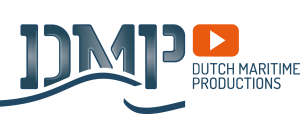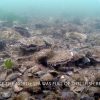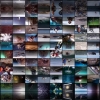Take a look in the North Sea
Join us and see what lives underwater in the North Sea. On the Dutch Continental Shelf, five areas have been designated as protected (so-called Natura2000 areas). These are the Dogger Bank, the Frisian Front and the Central Oyster Grounds, the Borkum Stones, the Cleaver Bank and the Coastal Zone. These five areas are different and are characterized by unique characteristics and special animal species. The North Sea is home to beautiful nature. Help us to protect her.
The Dogger Bank
The Doggersbank is the youngest part of the North Sea. This most shallow part of the sea floor was born during the last ice age (about 10,000 years ago) and finally disappeared under the waves just 5,000 years ago. The Doggersbank is also called the engine of the North Sea. It is a delivery room for a lot of life, especially Atlantic cod.
The Frisian Front and the Central Oyster Grounds
Once 20,000 square kilometers of the North Sea floor were covered with flat oysters. These oysters formed a unique and extensive natural hard substrate. This was an important basis for a rich and sustainable North Sea nature. All these oysters are gone, mainly due to overfishing. International governments and fishermen are slowly accepting the problem and realising that action is necessary. Several initiatives have now been started to restore these shellfish banks.
The Borkum Stones
The Borkumse Stenen is a small area, close to the coast that lies on the border of the Netherlands and Germany. Just like the Texel Stones and the Vlieland Stones, the Borkum Stones are a remnant of the second-last ice age. The area is unspoilt because it is shunned by fishermen. They do not want to run the risk of wasting their nets. This has resulted in a primal area where biodiversity is enormously rich.
The Cleaver Bank
The bottom of the Klaverbank also consists of gravel. This is remarkable because the vast majority of the North Sea bottom consists of sand. This gravel was initially interesting for extraction and an economic gain. Due to higher costs and limited revenues, the Dutch government stopped this extraction in 2003. Nowadays this naturally hard substrate is an important substrate for a wide variety of fauna.
The Coastal Zone
Due to the outflow of the large rivers, the coastal area is rich in nutrients. Especially for the Dutch coast. Anemones grow in vast fields and the wrecks are inhabited by large schools of pouting.


